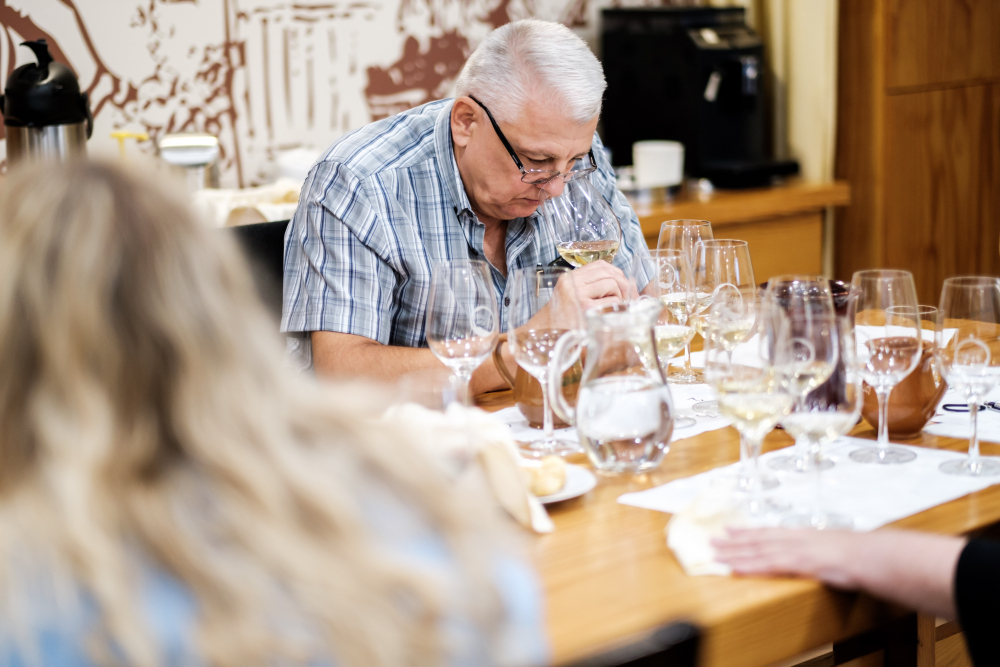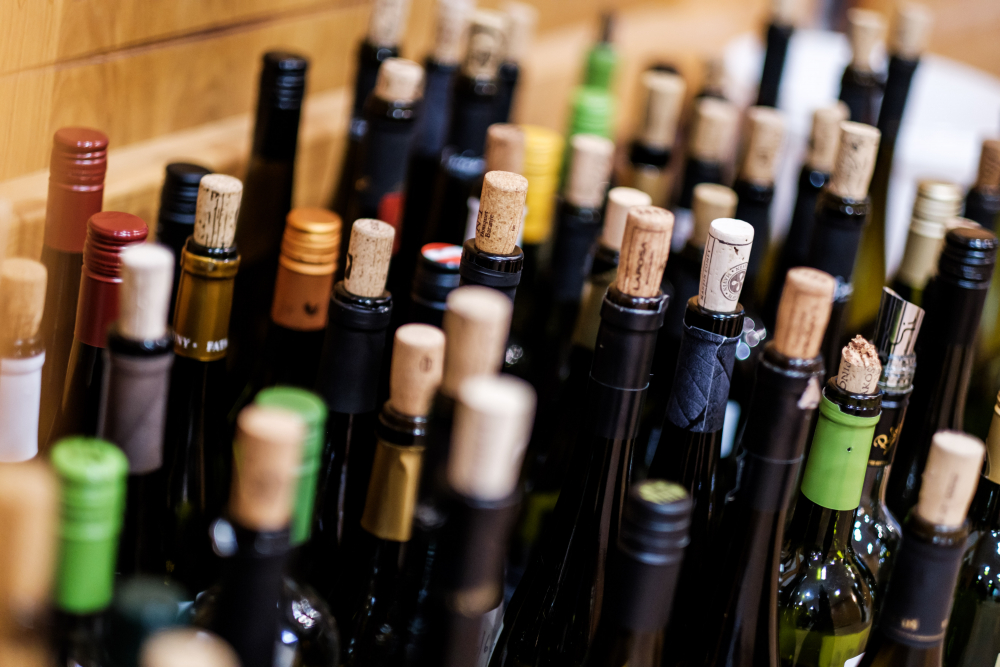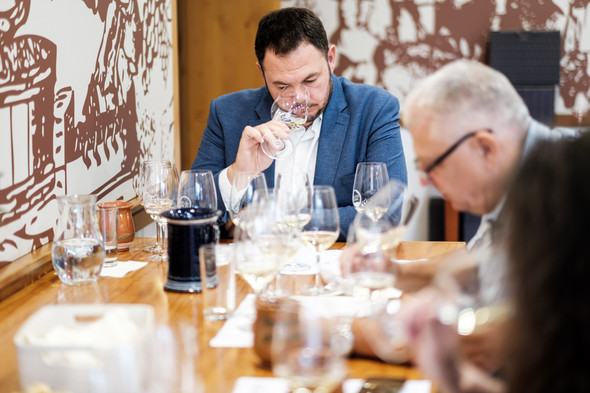For me, Olaszrizling is…
… part of my personal history. When I moved to Pécs, the pubs dispensed Olaszrizling from Siklós and Portugieser, which at that time you could still call Kékoportó, from Villány. Most of it was bulk wine, which was getting worse and worse, wine counterfeiting was rampant, and you were served horrible plonk that could barely be called wine from suspicious-looking plastic containers. However, there were some places with good wine. We sought out the good. We went to Villány. We went to Siklós. We went on wine courses. A parallel universe opened up, where the wine was good, enjoyable, diverse and boasted thousands of flavours.
After Olaszrizling from Siklós came that from Pécs followed by South Balaton, and then we ventured to the northern shore of the lake and then on to Somló. So much wine, so many occasions and so many moments. And then, the rediscovery of wines from Drávaszög, where, as kids, we used to visit the family for the harvest. But now the wines, the cellars and the people have also taken on a different meaning. I’ve tasted the whole of Central Europe through a single variety, from Szerémség, Bánát, the former Kutjevó and Muraköz. There is nothing else in which I can better see our centuries-old common heritage.

… religion. A typically regional variety - let’s forget for a moment the eight hectares of vineyard of Borba, genetically Olaszrizling, in Spain – which is indigenous to the Carpathian Basin. Indigenous is an odd word, of course, for such a diverse and rapidly changing plant, but generations have been raised on it and it has a sense of home. When I have Olaszrizling in my glass, I feel at home.
… the future. There are roughly 30,000 hectares planted, with nearly 5,000 of those in Hungary. You can find it in practically every wine region. Olaszrizling is cultivated in every country around Hungary too, wherever the Monarchy once reached. Whether it be Graševina, Welschriesling, Grašac, Ryzlink Vlašský, Rizling Vlašský, Laški rizling or Riesling Italico.

Zoltán Győrffy
Its name is misleading, it leads to controversy, we don’t like to use the others’ names, we argue about its origin, should it be a wine for spritzers or a top wine, or is it perhaps everything? It can be so much more if we believe in it and look to the future. All we can do is bring together wines from the wider region every year, mobilise producers, invite judges who love Olaszrizling and show its broad spectrum to wine lovers.
The first Grand Tasting presented us with 125 faces of Olaszrizling. However, this also gave us the opportunity to gain an impression of styles, national character, regional characteristics and unique approaches. We all learned something, from the wines and from each other. Those who believe in the variety should get to know it as well as possible, not only in their immediate environment, but also from a wider perspective.

… cooperation. The tasting was hosted by the reclusive wine village of Mecseknádasd, as they call themselves. The Association of Mecseknádasd Grape and Wine Producers joined us as co-organiser, providing a venue and helping hands. It was a pleasure to work with good people for a good cause. We are very grateful, thank you! Now, I only hope that next time, the local small producers will be braver, and we can taste some Olaszrizling from Mecseknádasd too, because they have some lovely wines, as we discovered at the evening tasting.
… life. Let’s taste Olaszrizling, encourage winemakers not to lose faith in it and motivate them to make better and better wines. Besides Kékfrankos, Olaszrizling is the variety that can really show what this region, from northern Italy to Romania and from the Czech Republic to Serbia, is capable of. There is an Olaszrizling for every day and for every mood, you simply have to find it. We are seeking it relentlessly.






